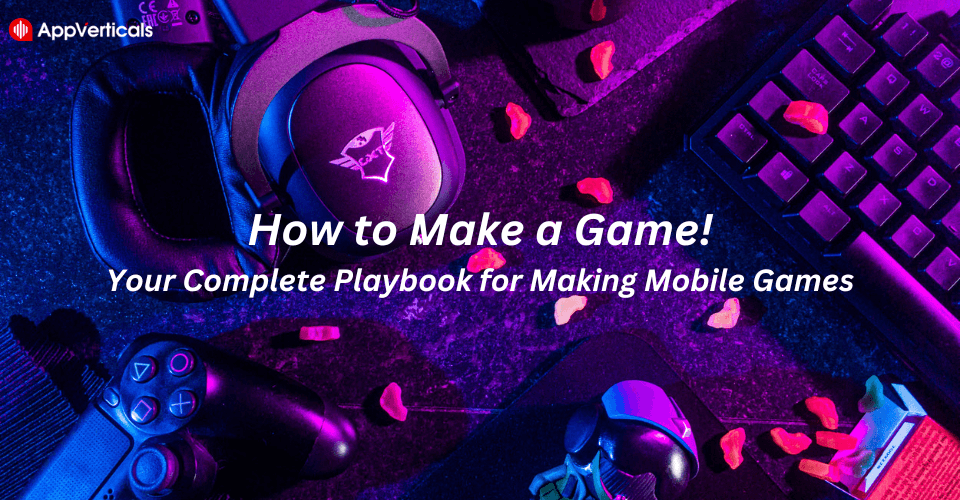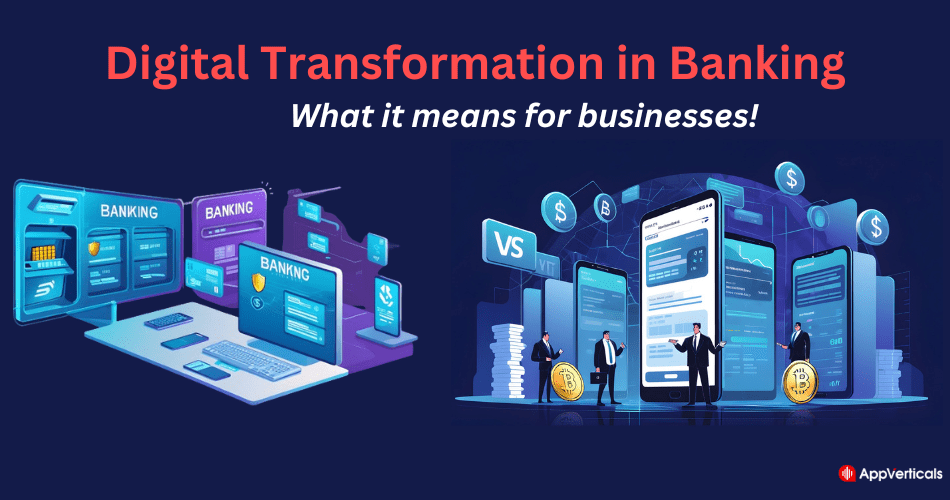The video games market is expected to generate $282.30 billion in revenue in 2024 and reach a projected market volume of $363.20 billion by 2027.
Whether you’re a creative mind bursting with game concepts or simply curious about how to make a mobile game, this comprehensive guide is your one-stop shop for turning your passion into a playable experience.
Here, you’ll discover everything you need to know about mobile game development, from brainstorming captivating ideas to navigating the world of how to create a mobile game. We’ll break down the entire process step by step and equip you with the knowledge required to transform your vision into a mobile game development masterpiece.
So, are you ready to unlock your inner game developer? Dive in and get ready to learn how to make a game!
Top Mobile Game Development Stats and Technologies
- The global virtual reality gaming industry was valued at USD 20.73 billion in 2022 and is expected to increase at a compound annual growth rate (CAGR) of 22.7% by 2030.
- Blockchain technology is becoming increasingly popular in the gaming business. This industry is expected to generate $65.7 billion in revenue by the end of 2027, with a CAGR of 70.3%.
- In 2023, mobile games produced $81 billion in revenue from both platforms. iOS accounted for $47.7 billion of the income, while Google Play produced $33.3 billion. Mobile accounted for 49% of overall game revenue, which was nearly equal to the totals from PCs and consoles combined.
- The global wearable gaming technology market is expected to exceed US$ 76,421 million by 2032, growing at a CAGR of 14.6% between 2022 and 2032.
- Generative AI in the gaming market was valued at USD 1117.8 million in 2023 and is expected to increase to $ 6943.7 million by 2032, with a CAGR of 22.5% over the forecast period.
- Unity is the preferred game engine, with 61% of developers surveyed using it. It accounts for 30.03% of the Game Development market.
Let’s dive into emerging technologies shaping the industry and how they might influence how you create a game:
Emerging Technologies for How to Make a Mobile Game:
Cutting-edge technologies are revolutionizing the way we experience and create games:
- Augmented Reality (AR): AR overlays digital elements onto the real world, offering unique gameplay experiences that blend the physical and digital realms. Imagine catching virtual monsters in your neighborhood or battling aliens in your living room!
- Virtual Reality (VR): VR transports players entirely into a virtual world, creating immersive and interactive experiences. While VR headsets are currently more expensive, their accessibility is constantly improving.
- Cloud Gaming: This technology allows players to stream games directly to their devices without needing powerful hardware. This opens up the possibility of playing high-end games on mobile devices, even those with lower specifications.
As per the most recent figures, there are around 3.32 billion active video gamers globally. In just eight years, this figure has increased by more than one billion.
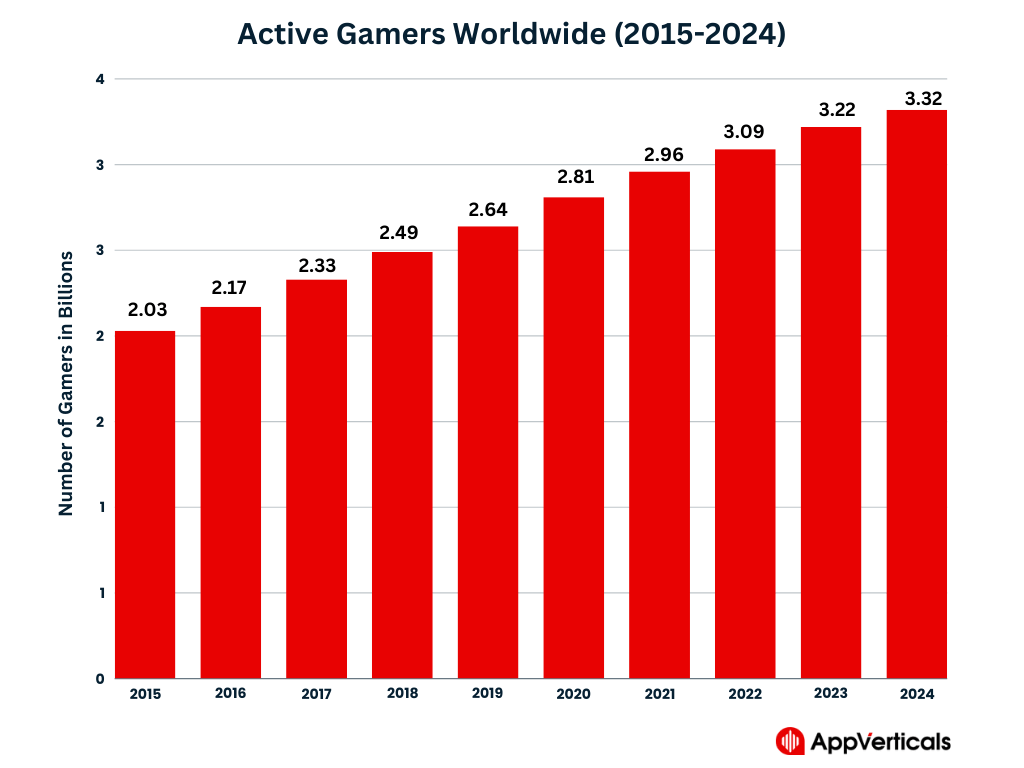
Whether you choose to implement them directly in your game or simply stay informed to cater to player preferences, keeping your finger on the pulse of the mobile gaming landscape will give you a significant edge.
DON’T LET YOUR DREAM MOBILE GAME STAY TRAPPED IN YOUR HEAD
TURN YOUR VISION INTO REALITY – START YOUR MOBILE GAME DEVELOPMENT JOURNEY TODAY!
Yes Let’s goWho are you making games for?
You might be surprised that mobile gamers come from all ages and backgrounds. From casual puzzle solvers to hardcore strategy enthusiasts, the mobile gaming market is incredibly diverse. Understanding this diverse audience and their preferences is key to crafting a game that resonates with them. Now, get read to learn how to make a mobile game.
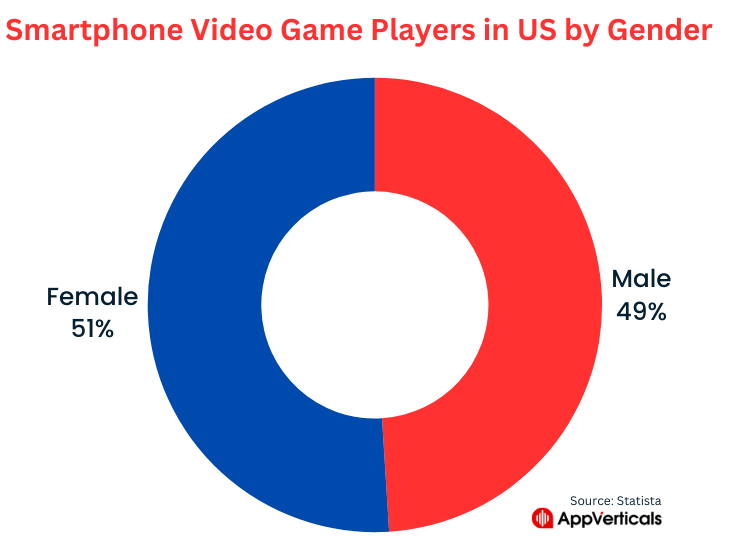
Who brings your game idea to life?
Mobile game development isn’t a one-person show. It takes a talented team of specialists, each contributing their unique skills.

How to make a game? Here’s a glimpse into the mobile game development ecosystem:
- Game Designers: These masterminds dream up the core concept, mechanics, and story that make your game tick. They’re the architects of the fun!
- Programmers: They’re the coding wizards who translate the designer’s vision into reality, breathing life into your game through code.
- Artists: From character design to stunning environments, these creative minds bring visual magic to your game, making it visually captivating.
- Sound Designers: They craft sound effects and music that immerse players in the game world, adding another layer of depth and engagement.
- Marketers: Once your game is polished, these marketing specialists spread the word, generating excitement and attracting players to your creation.
Pre-Production: Laying the Foundation for Your Mobile Game Development
Now, you’ve brainstormed a fantastic game concept and are ready to dive deeper into the development process. But before you start coding or designing fancy graphics, it’s crucial to solidify your vision and plan your strategy.
Game Design Document (GDD): Your Game’s Blueprint in How to Make a Game
Imagine building a house without a blueprint; things could get messy, right? The same applies to game development. Your Game Design Document (GDD) serves as the blueprint for your mobile game, outlining all the key elements that bring your vision to life. It’s a comprehensive document that acts as a central source of truth for everyone involved in the development process.
What goes into a GDD?
- Core Mechanics: This is the heart and soul of your game. How will players interact with your game? What are the rules, challenges, and rewards? Popular games like Candy Crush or Angry Birds are also simple to understand yet highly addictive.
- Story (if applicable): Not all mobile games require a complex story, but if yours does, outline the plot, characters, and narrative elements that will engage players.
- Art Style: What visual style will your game have? Will it be cartoony, realistic, or something in between? Defining the art style early on ensures visual consistency throughout the development process.
- Characters (if applicable): Describe the main characters, their personalities, and their roles within the game.
- Other Key Elements: This can include user interface (UI) design, sound design, level design, and any other important aspects that contribute to the overall gameplay experience.
Also read: Top 8 games like RuneScape
Pro Tip!
Creating a GDD can seem daunting, but don’t worry! There are plenty of free online templates and resources available to help you get started. Now, move ahead and learn more on how to make a mobile game.
Prototyping in How to Make a Mobile Game
Prototyping is a stripped-down version that allows you to test the core mechanics, get feedback from others, and refine your concept before diving into full-fledged development.

Benefits of Prototyping:
- Early Feedback: Identify potential issues with gameplay, user interface, or overall game flow before investing significant time and resources into development.
- Refine your Concept: Experiment with different mechanics and features to see what works and what doesn’t.
- Gather User Feedback: Get your friends, family, or even potential players to test your prototype and provide valuable feedback on their experience.
Creating a Prototype:
There are various ways to create a prototype, depending on your technical skills and the complexity of your game. Here are a few options:
- Paper Prototyping: This is a low-tech and cost-effective option. Draw out your game screens and gameplay mechanics on paper, or use sticky notes to simulate different elements.
- Digital Prototyping: If you’re comfortable with coding, you can create a game with simple digital prototype using game development tools or even basic coding languages like Python.
- Game Design Software: Several game design software programs offer tools specifically designed for creating prototypes.
Pro Tip for How to make a game!
Regardless of the method you choose, remember that the goal of prototyping is to test and refine your concept, not create a polished final product.
Planning and Budgeting: The Roadmap to Success
Now that you have a clear vision of how to make a game and a tested prototype, it’s time to create a roadmap for game development. This involves planning your timeline, determining your budget, and assembling your team (if applicable).
Essential Planning Considerations for how to make a game:
- Development Timeline: Set realistic milestones for different stages of development, such as completing the game engine integration, designing the first level, and implementing core mechanics. This helps you stay on track and avoid delays.
- Budget: Estimate the costs associated with development, including software licenses, art assets, sound design, and marketing. Be realistic and be prepared to adjust your plans if needed.
- Team Building (if applicable): If you’re not going solo, consider the skills and expertise you need on your team. Will you need programmers, artists, sound designers, or marketing specialists? Delegate tasks based on each team member’s strengths.
Mobile Game Development Cost Breakdown
| Game Complexity | Estimated Cost Range (USD) | Description |
| Simple | $5,000 – $25,000 | Basic mechanics, limited graphics & sound, quick development time. |
| Mid-level | $25,000 – $75,000 | More complex mechanics, improved graphics & sound, moderate development time. |
| Moderately Complex | $75,000 – $150,000 | Engaging gameplay, diverse features, good graphics & sound, longer development time. |
| Highly Complex | $150,000+ | Deep gameplay mechanics, extensive features, high-quality graphics & sound, significant development time. |
Also read: Cost to make a game
Pro Tip!
By taking the time to lay the groundwork in this pre-production phase, you’ll be well-equipped to bring your game concept to life.
Production: Bringing Your Mobile Game Development to Life (How to Make a Mobile Game)
Now that you’ve laid the groundwork with your GDD and prototype, it’s time to unleash your creativity and technical skills in the production phase. This is where your mobile game truly takes shape, transforming from a concept on paper to a fully functional and engaging experience. Let’s discuss how to make a game.

1. Game Design: The Heart and Soul of Your Game
While learning how to make a game, game design is the architect who crafts the blueprint for a thrilling amusement park. It’s all about defining the core elements that make your game fun, engaging, and, ultimately, irresistible to players. Here are some key aspects to consider:
- Gameplay Mechanics: It is the foundation of your game, defining how players interact with the game world. It encompasses everything from movement and combat controls to resource management and power-ups. Popular mechanics include puzzle-solving, resource management, exploration, and strategic decision-making. The key is to strike the right balance between complexity and intuitiveness.
- User Interface (UI) & User Experience (UX): A good UI/UX design ensures players can effortlessly interact with your game. Your UI elements, like buttons, menus, and health bars, should be clear, intuitive, and visually appealing. Similarly, the UX focuses on the overall experience players have while interacting with your game.
- Balancing: This is the art of ensuring your game is neither too easy nor too difficult. An unbalanced game can quickly lose players. Regularly test your game and adjust difficulty levels, enemy strength, or resource availability to create a challenging yet rewarding experience for players of different skill levels.
2. Different Game Genres, Different Design Considerations:
The world of mobile games is diverse, with various genres catering to different player preferences.
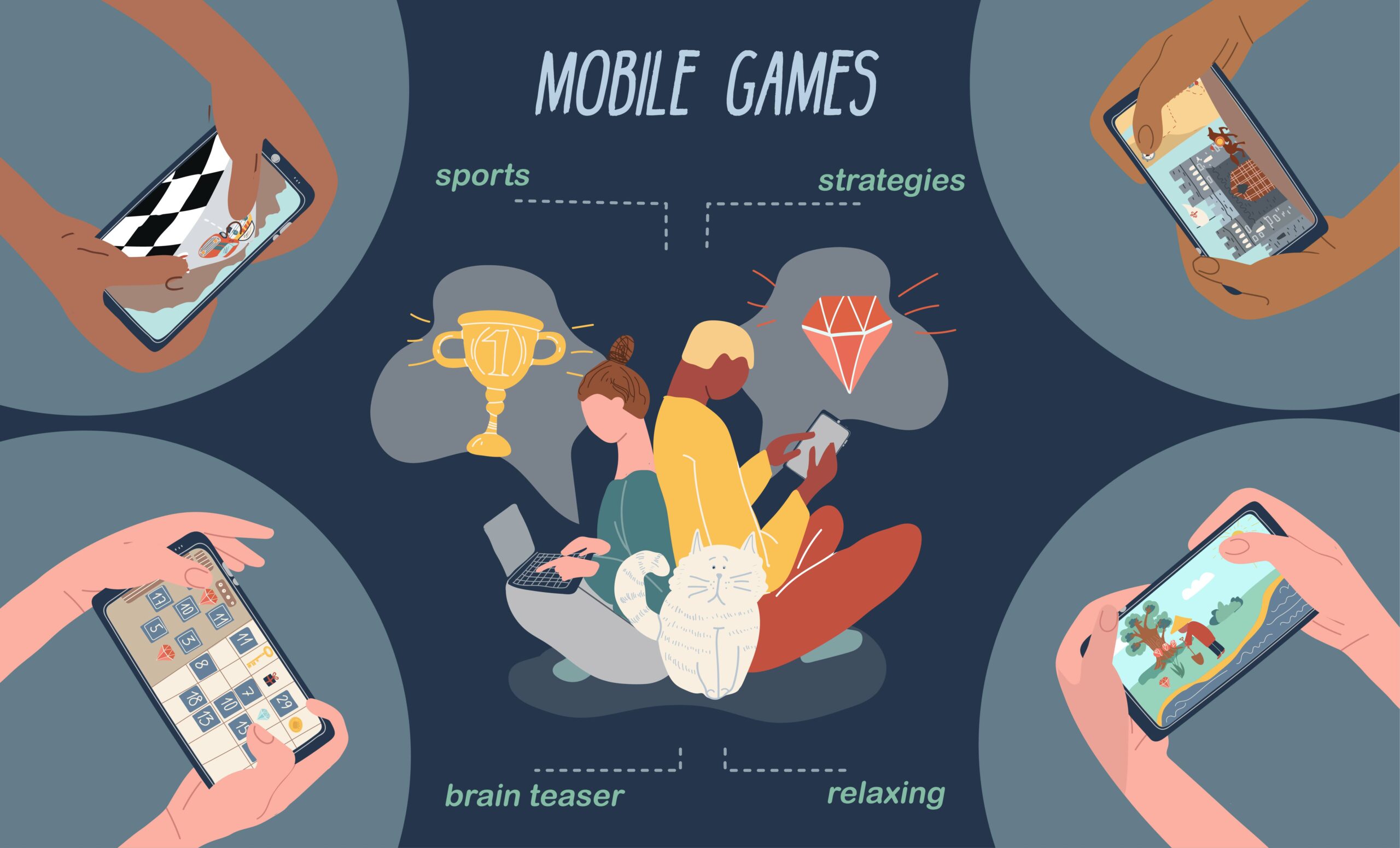
How to make a game from design perspectives? Here’s a glimpse into some popular genres and their design considerations:
- Puzzle Games: These games challenge players to solve problems using logic and critical thinking. Common mechanics involve matching elements, navigating mazes, or completing tasks within a time limit.
- Strategy Games: These games require players to think strategically, manage resources, and make tactical decisions to outwit opponents. They often involve building bases, managing troops, and conquering objectives.
- Endless Runners: These fast-paced games require players to navigate obstacles and collect rewards as they progress through an ever-ending environment. Simple controls and satisfying gameplay loops are key to keeping players hooked.
Pro Tip!
These are just a few examples of how to make a game, and each genre has its own unique set of design considerations. Research successful games within your chosen genre to understand common mechanics, user expectations, and best practices in design.
3. Game Development: Bringing Your Code to Life
Now that you’ve defined the gameplay mechanics and user experience, it’s time to translate your vision into code. This is where the magic happens, and your game becomes a playable reality. Now, get into the cores of how to make a game.
Programming Languages & Software:
The world of mobile game development offers various game engines that simplify the development process. Popular choices include Unity and Unreal Engine, which offer visual scripting tools even for beginners. These engines provide pre-built features and functionalities you can leverage to build your game without needing to write complex code from scratch.
However, learning a specific programming language like C# or Java can unlock greater customization and control over your game’s development. While this requires a steeper learning curve, it allows you to tailor your game to your specific vision and create unique gaming features.
Ultimately, the choice depends on your technical skills, project scope, and desired level of control.
The Development Process: Coding, Debugging, and Testing
The development process involves several steps:
Coding: This involves translating your game design document and prototype into actual code using the chosen programming language or engine.
Debugging: No code is perfect, and errors (bugs) are inevitable. Debugging involves identifying and fixing these bugs to ensure your game runs smoothly and functions as intended.
Testing: It is crucial to regularly test your game throughout development. Play your game yourself, ask friends and family for feedback, and consider using automated testing tools.
4. Art & Design: Captivating Players with Visuals and Sound
Just like a visually stunning amusement park attracts more visitors, high-quality graphics, animations, and sound design are essential for captivating players and creating a memorable and immersive experience in your mobile game. So work on mobile game development with care.
- The Power of Visual Appeal: Eye-catching visuals play a crucial role in drawing players in and keeping them engaged. Ensure your visuals are consistent with your chosen genre and visually appealing to your target audience.
- Sound Design: Setting the Mood and Enhancing Gameplay: Sound effects and music add another layer of immersion to your game. Well-crafted sound effects can emphasize actions, create tension, or provide feedback to players. Similarly, a fitting soundtrack can set the mood, enhance the emotional impact of your game, and keep players engaged.
- Creating Game Assets: This involves crafting the visual elements that bring your game world to life, including:
- Characters: Design memorable characters that resonate with your players. Consider their personalities, backstories, and visual styles to create a consistent and engaging gaming experience.
- Environments: Create a game with visually captivating environments that complement your game’s theme and gameplay. Whether it’s a fantastical forest or a bustling city, ensure the environment feels cohesive and engaging to explore.
- Animations: Animations breathe life into your game characters and objects. Smooth and well-crafted animations enhance the visual appeal and overall user experience.
Also read: How to code a game
How to Make a Game Pro Tip!
Striking the right balance between visual quality and performance optimization is crucial for mobile game development. If you’re new to game design, consider utilizing tools like asset packs or freelance artists to create a game with high-quality visuals.
ACCESS EXCLUSIVE RESOURCES AND EXPERT GUIDANCE TO MOBILE GAME DEVELOPMENT
PARTNER WITH APPVERTICALS AND WATCH YOUR GAME CLIMB THE CHARTS!
Yes Let’s go5. Quality Assurance (QA) & Testing: Polishing Your Masterpiece
Before releasing your game to the world, rigorous testing and quality assurance (QA) are essential. This final stage of our how to make a game guide ensures your game is polished and bug-free and delivers an enjoyable experience for players.
- The Final Polish: This involves thoroughly playing through your game, identifying and fixing any bugs or glitches, ensuring smooth performance across various devices, and refining the overall user experience. Look for inconsistencies, unbalanced gameplay elements, and areas where the game can be improved based on player feedback from previous testing stages.
- Importance of QA: A polished and bug-free game is crucial for receiving positive user reviews and attracting a wider audience. A buggy or poorly designed game can quickly turn players away.
Pro Tip!
By successfully navigating the production phase, you’ll have transformed your initial game concept into a fully functional and visually appealing mobile game. But the journey of how to make a game doesn’t end there!
Read also: 18 best offline iPhone games
Post-Production: Launching Your Mobile Game and Ensuring Success (How to Make a Mobile Game)
Have learnt how to make a game? Congratulations! You’ve conquered the mobile game development phase and have a polished mobile game ready to take the world by storm. But before you hit the “publish” button, there are a few crucial post-production steps to ensure a smooth launch and a successful future for your game.

1. Testing & Quality Assurance (QA): The Final Hurdle
Even the most meticulously crafted mobile game can harbor hidden bugs or glitches that can negatively impact the player experience. This is where rigorous testing and quality assurance (QA) come into play.
Why is testing so important?
- Identify and fix bugs: No matter how meticulous you are, bugs can slip through the cracks during development. Testing helps you identify these bugs, from minor graphical glitches to game-breaking crashes, and fix them before they reach players.
- Ensure smooth player experience: A smooth and bug-free experience is crucial for keeping players engaged and coming back for more. Testing across various devices and with different player profiles helps identify potential performance issues and ensure a seamless experience for everyone.
Pro Tip (How to make a game)!
Invest time and resources in this stage to ensure your game launches with a positive first impression and avoids negative reviews due to bugs or glitches.
2. Publishing & Marketing: Getting Your Game Discovered
Once your game is polished and bug-free, it’s time to publish it on app stores like the Apple App Store and Google Play Store. Each store has its submission process and guidelines, so be sure to familiarize yourself with their requirements before submitting your game.
Marketing your game is equally important. Here are some strategies to consider:
- Create a compelling app store listing: This is your game’s first impression, so make it count! Include captivating screenshots, trailers, and a clear description that highlights your game’s unique features and target audience.
- Leverage social media: Build a community around your game by creating engaging content on social media platforms like Twitter, Instagram, and TikTok. Share development updates and gameplay snippets, and interact with potential players to generate excitement.
- Consider influencer marketing: Partnering with relevant gaming influencers can expose your game to a wider audience and generate valuable word-of-mouth promotion.
3. Monetization: Turning Your Passion into Profit
Now that your game is live, it’s time to consider how you’ll generate revenue from your creation. It is the last step of our “how to make a mobile game” guide.
Mobile games earned around 91.8 billion US dollars in 2022 yearly sales, representing for 50% of the worldwide gaming market at that time. Console games came in second with 52.2 billion US dollars in global revenue.
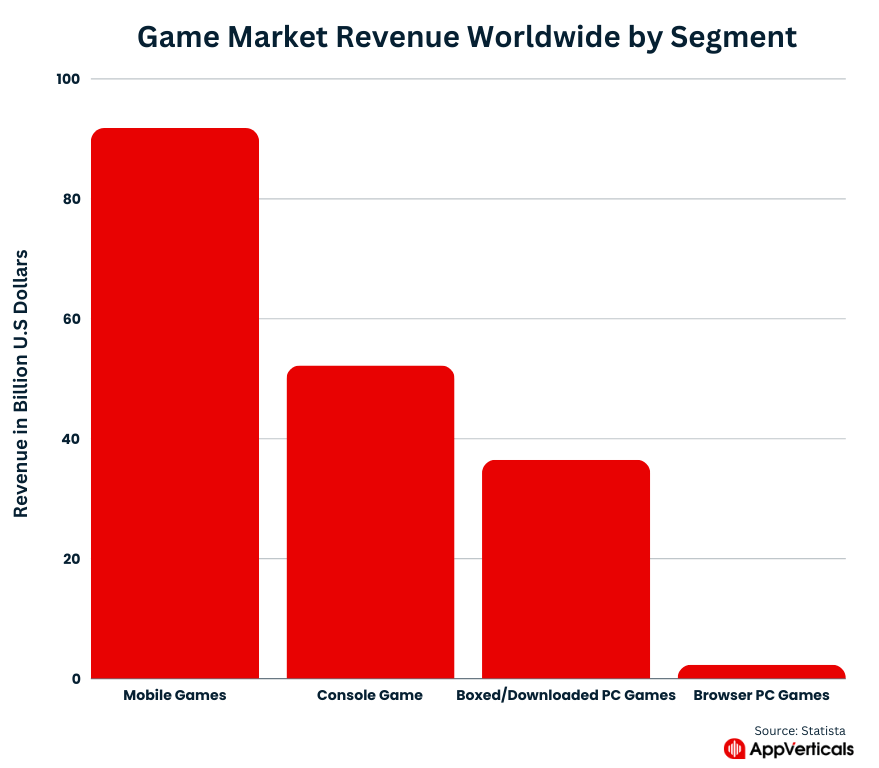
Here are some common monetization models:
- In-app purchases: They allow players to purchase additional content such as power-ups, cosmetic items, or new levels, within the game using real money.
- Subscriptions: Players can pay a recurring fee to access exclusive content, features, or benefits within the game.
- Advertising: You can integrate non-intrusive ads into your game, which generate revenue when players view or click on them.
Pro Tip!
Choosing the right monetization model depends on your target audience, game genre, and overall design. Consider what type of gaming experience you want to create for your players and what model aligns best with your vision and goals.
4. Live Ops & Updates: Keeping Players Engaged
The journey doesn’t end here! Ongoing maintenance and updates are crucial for keeping players engaged and coming back for more. Here’s why:
- Bug fixes and performance improvements: Even after thorough testing, new bugs or performance issues might arise after launch. To maintain a positive player experience, regularly address these issues with timely updates.
- New content and features: Adding new levels, challenges, characters, or events can keep players engaged and entice them to return to your game over time.
- Community engagement: Actively listen to player feedback and address their concerns. Hosting events, contests, or polls can further engage your community and keep them invested in your game’s long-term success.
Mobile games are a live service, and ongoing updates are essential for keeping players engaged and maintaining a healthy player base. By following these post-production steps, you’ll be well on your way to launching a successful mobile game and captivating players worldwide.
The most important ingredient is your passion and creativity! Take help from this how to make a mobile game guide.
Elevate Your Mobile Game Development with AppVerticals!
At AppVerticals, the leading mobile app development company in Dallas, we understand the challenges aspiring developers face. Elevate your mobile game development with our suite of resources and expert guidance.
Apart from this “how to make a mobile game” guide, here’s how:
- Expert Guidance: Get access to a team of industry veterans who can guide you through the entire mobile game development process, from brainstorming ideas to final launch.
- Cutting-Edge Resources: The valuable tools, tutorials, and resources are specifically designed to empower mobile app and game developers of all experience levels.
- Streamlined Solutions: AppVerticals streamlines complex tasks like game engine optimization and monetization strategies.
How to make a game with AppVerticals? From concept creation to launch, we’ll equip you with the tools and knowledge to turn your vision into a top-notch mobile game!
ELEVATE YOUR MOBILE GAME DEVELOPMENT WITH INDUSTRY-LEADING TECHNIQUES.
DEVELOP GROUNDBREAKING GAMES AND DOMINATE THE MOBILE MARKET
GET STARTED NOW!Final Words!
Now you’ve learnt how to make a mobile game with possibilities, and your unique ideas and creativity have the potential to shape the future of this ever-evolving industry. So, are you ready to take the plunge and start developing your own mobile game? The power is in your hands – download some resources, explore different tools, and get started on your game development journey today!
FAQs
1. How can I make a mobile game?
Creating a mobile game involves several steps: planning your concept, choosing development tools, learning coding (or hiring a programmer), building the game, and publishing it on app stores. It requires dedication, creativity, and technical skills that top-notch developers like AppVerticals possess. Read our “how to make a game“ guide to understand it better.
2. Can I make my own mobile game?
Absolutely! While complex games might require a team, simple games can be built by individuals using beginner-friendly tools and online tutorials. Be prepared to learn new skills and invest time in the process. Read our “how to make a game“ guide to understand it better.
3. How do I make a game for Android?
Several game engines, like Unity and Unreal Engine, allow you to build games compatible with various platforms, including Android. These engines offer tutorials and resources specifically for mobile development. Read our “how to make a game“ guide to understand it better.
4. How much does it cost to make a mobile game?
The cost varies greatly depending on your game’s complexity, the tools used, and whether you hire professionals. You can create a simple game with free software, while complex ones might require paid tools and developer salaries, potentially costing thousands or even millions.
5. Do free mobile games make money?
Yes, even free games can be profitable! Many utilize in-app purchases, advertisements, and subscription models to generate revenue. The key lies in creating an engaging experience that motivates players to spend money within the game. Even the best offline iPhone games are giving value to their developers.
6. Can I make a mobile game alone?
It is possible but challenging. Building a complex game solo requires mastering multiple skills, like coding, art, and design. Consider collaborating with AppVerticals, who possess complementary skills, or starting with a simpler concept manageable by one person. Read our “how to make a game“ guide to understand it better.
How to make a game on mobile? Contact Us!

